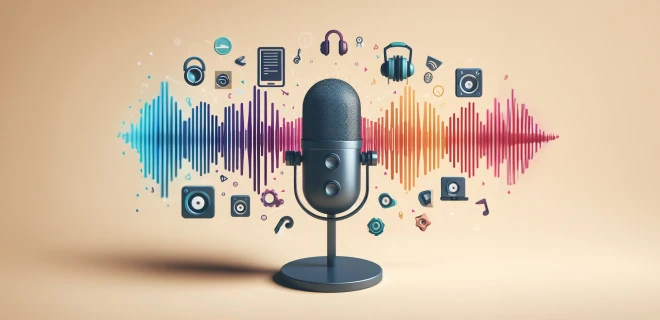Voiceover and dubbing are both techniques used in film and media production, but they have distinct differences in how they are applied and what they aim to achieve.
Voiceover is the technique of adding a voice to a film, animation, or commercial, but the original audio remains intact. It is often used for documentaries, corporate videos, or educational content. The voiceover artist speaks over the original audio to provide additional context, commentary, or translation.
Dubbing, on the other hand, involves replacing the original voices with translated or new voices in a different language, synchronized with the lip movements of the actors. This technique is common in films, TV shows, and animations to make content accessible to non-native speakers.
While both methods serve to make content more accessible to wider audiences, dubbing is more commonly used in the entertainment industry, while voiceover is favored in non-fictional content.
How Does the Dubbing Process Work in Movies and Animation?
The dubbing process in movies and animations is a meticulous task that involves several stages to ensure that the dialogue aligns with the visuals and conveys the intended emotion in the new language.
Translation of the Script: The first step is to accurately translate the original script into the target language. This requires linguistic expertise to ensure the dialogue maintains its meaning, context, and cultural nuances.
Casting Voice Actors: Suitable voice actors are chosen based on the characters' personalities, voice types, and the emotions they need to convey.
Recording the Dialogue: In the recording studio, voice actors watch the original footage and try to synchronize their voices with the actors' lip movements. This is a crucial step to ensure a seamless viewing experience for the audience.
Mixing and Finalization: The new dialogue is then mixed with the original soundtrack, sound effects, and background music. This final step ensures that the dubbed version sounds as natural as possible.
Dubbing allows audiences to enjoy content in their native language while preserving the original artistic and emotional aspects of the film or animation.
Voiceover Techniques and Examples in Documentaries
In documentary filmmaking, voiceover is an essential tool for narration, adding context and guiding the audience through the story. The voiceover in documentaries helps to:
Narrate the Story: The voiceover artist delivers the narrative, helping explain events, concepts, and ideas to the viewer.
Provide Context: Often used to give background information, historical context, or expert commentary that complements the visuals.
Create Emotion and Tone: The tone of the voiceover can enhance the emotional impact of the documentary, influencing how the audience perceives the subject matter.
Examples of documentaries using voiceover effectively include "Planet Earth", where narration by Sir David Attenborough brings the stunning visuals to life, and "The Last Dance", where voiceovers provide insider perspectives on the Chicago Bulls' historic 1990s run.
By using voiceover techniques, documentary filmmakers can create a richer and more immersive experience for viewers.
Voiceover vs. Dubbing: Key Differences and Uses
FAQs
Q: What’s the difference between voiceover and dubbing?
A: Voiceover overlays a new voice onto existing audio, while dubbing completely replaces the original voices to match new languages or versions.
Q: Does VoiceBros provide dubbing services?
A: Yes, we specialize in both voiceover and dubbing services for various types of media, including films, animations, and commercials.
How Does the Dubbing Process Work in Movies and Animation?
FAQs
Q: How does VoiceBros ensure high-quality dubbing?
A: Our team of experienced voice actors and sound engineers ensures that the dubbed voices are perfectly synchronized and capture the essence of the original content.
Q: Can I request specific voice actors for my dubbing project?
A: Yes, at VoiceBros, we offer a wide range of talented voice actors. You can select the best fit for your project based on tone, style, and languag
H3Voiceover Techniques and Examples in Documentaries
FAQs
Q: How do you choose the right voiceover artist for my documentary?
A: We match voiceover artists based on the tone, subject matter, and target audience of your documentary to ensure a perfect fit.
Q: Can I listen to samples of your voiceover work for documentaries?
A: Yes! We provide voiceover samples on our website so you can hear the diverse range of styles and tones our artists can offer.










